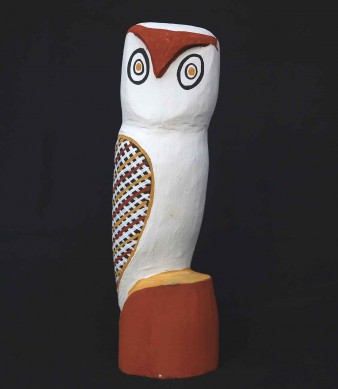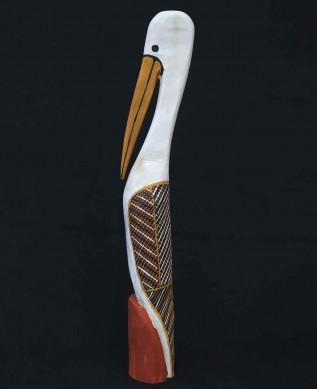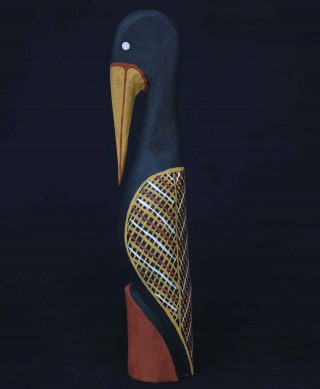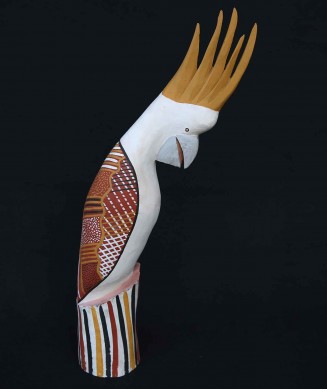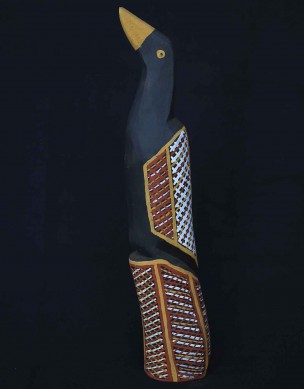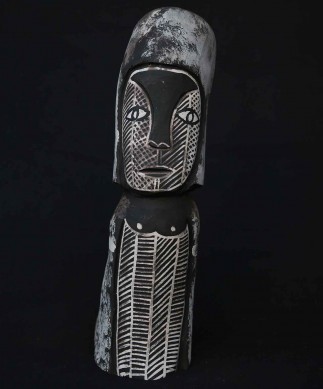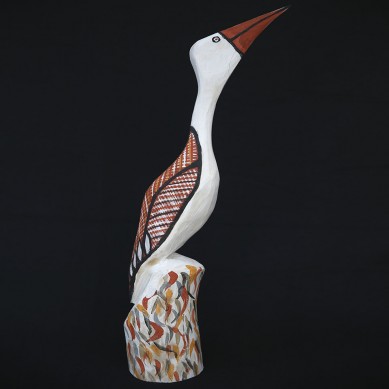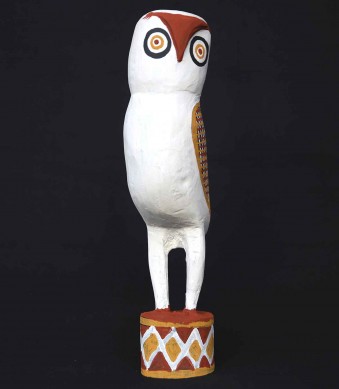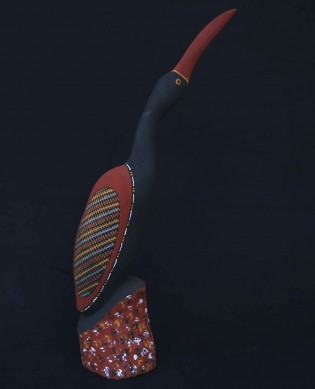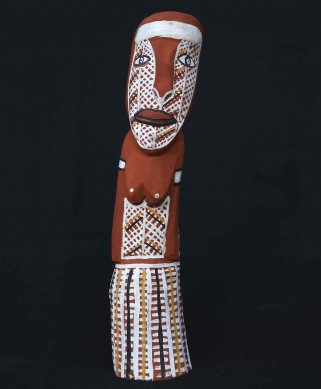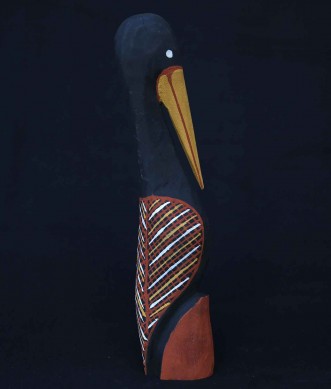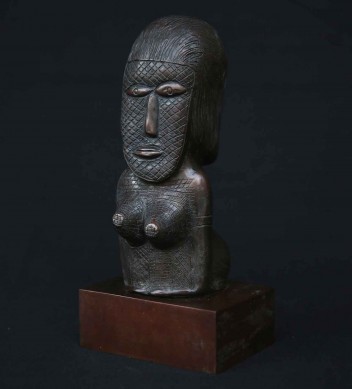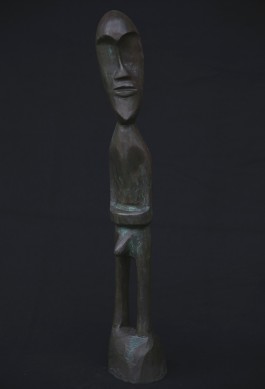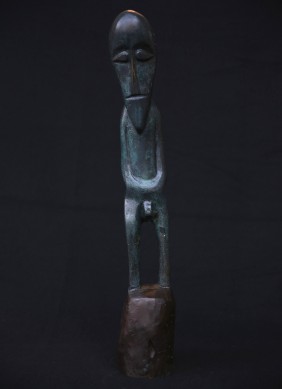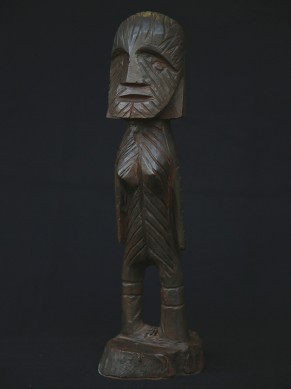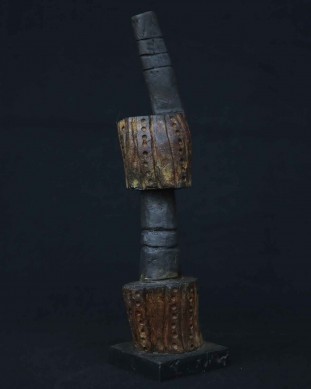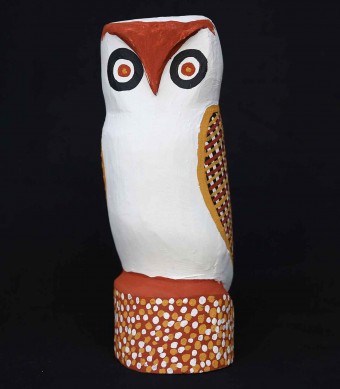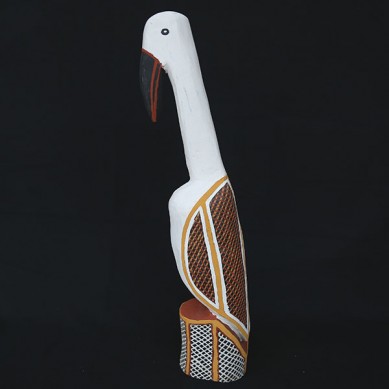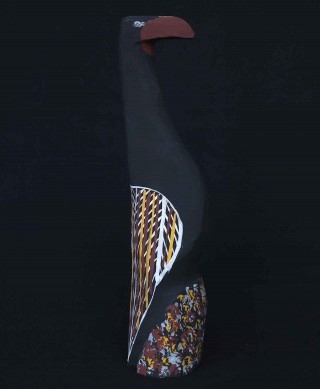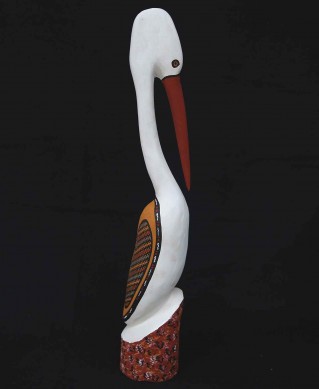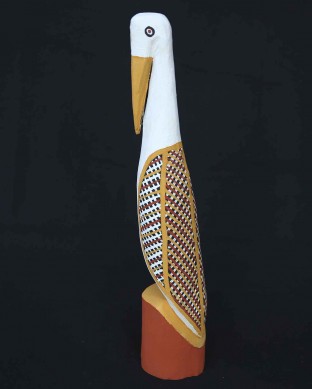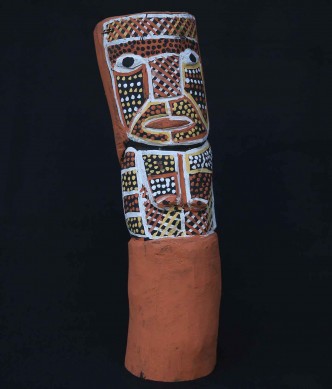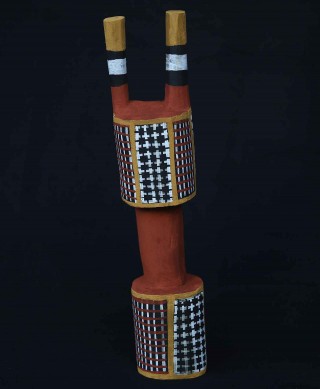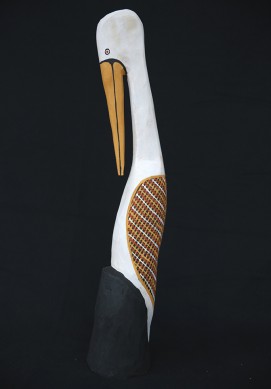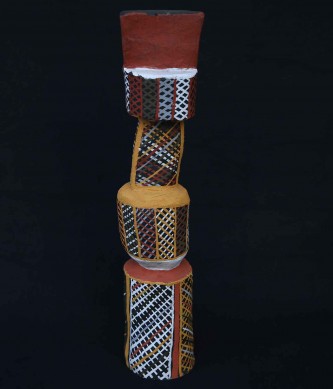Tiwi Carvings & Sculptures
Gallery 2
30 May – 9 July 2014
Tiwi artists of Melville Island and Bathurst Islands located in the Timor Sea near Darwin, make a distinctive contribution to Aboriginal art, combining a strong tradition of carving with painted clan designs, ceremonies and songs that gives their art its own unique qualities.
Ceremonies have a central place in the culture of the Tiwi people. Each of the ceremonies has its own form, which may vary according to circumstances and time, but all current ceremonies have their roots in past tradition. Two main Tiwi ceremonial events are performed – the annual Kulama ceremony and the mortuary or Pukumani ceremony. The Kulama ceremony is held at the end of the wet season as the yearly celebration of life festival. The ceremony takes three days and nights, starting with the ceremonial body painting, singing and dancing the rituals and feasting on yams.
Tiwi Design artist, Maria Josette Orsto, describes Kulama as “very important to Tiwi. When the rain finishes, the Tiwi start Kulama. Kulama ceremony is good for health, good hunting, initiation and good marriage.” When Tiwi artists use the strong concentric circle design in their paintings, they are representing the Kulama circle or ceremonial dancing ground.
The Pukumani ceremony is performed about six months after the death of an individual. “The Tiwi regard the Pukumani as the most important ceremony in a person’s life in the world of the living, and even though the Mobuditi (spirit of one dead) has been released, the person’s existence in the living world is not finished until the completion of the ceremony. To the Tiwi the entire focus of the ceremony is on the person now in the grave”. Jane Goodale, ‘Tiwi Wives’, University of Washington Press, C.1971
By performing the Pukamani ceremony the community sees that the spirit of the deceased departs from this world and goes to the spirit world. Carved and painted totemic poles called Pukamani are made and placed at the burial site during the ceremony. The Pukumani ceremony becomes a public ceremony of grieving and an artistic expression of culture played out through body painting and design, and through song, dance and sculpture. During the Pukumani ceremony the dances performed reflect the relationship of the participants to the deceased person.
Dancing or yoi is a central part of life and is at the core of all Tiwi ceremonies. Every person has their own Dreaming and inherit their own dance. The Dreaming dance comes down along the father’s line, and the totem or clan dance comes down on the mother’s line. By their nature these ceremonial rites become a wellspring of inspiration for all forms of art created by the Tiwi artists.


